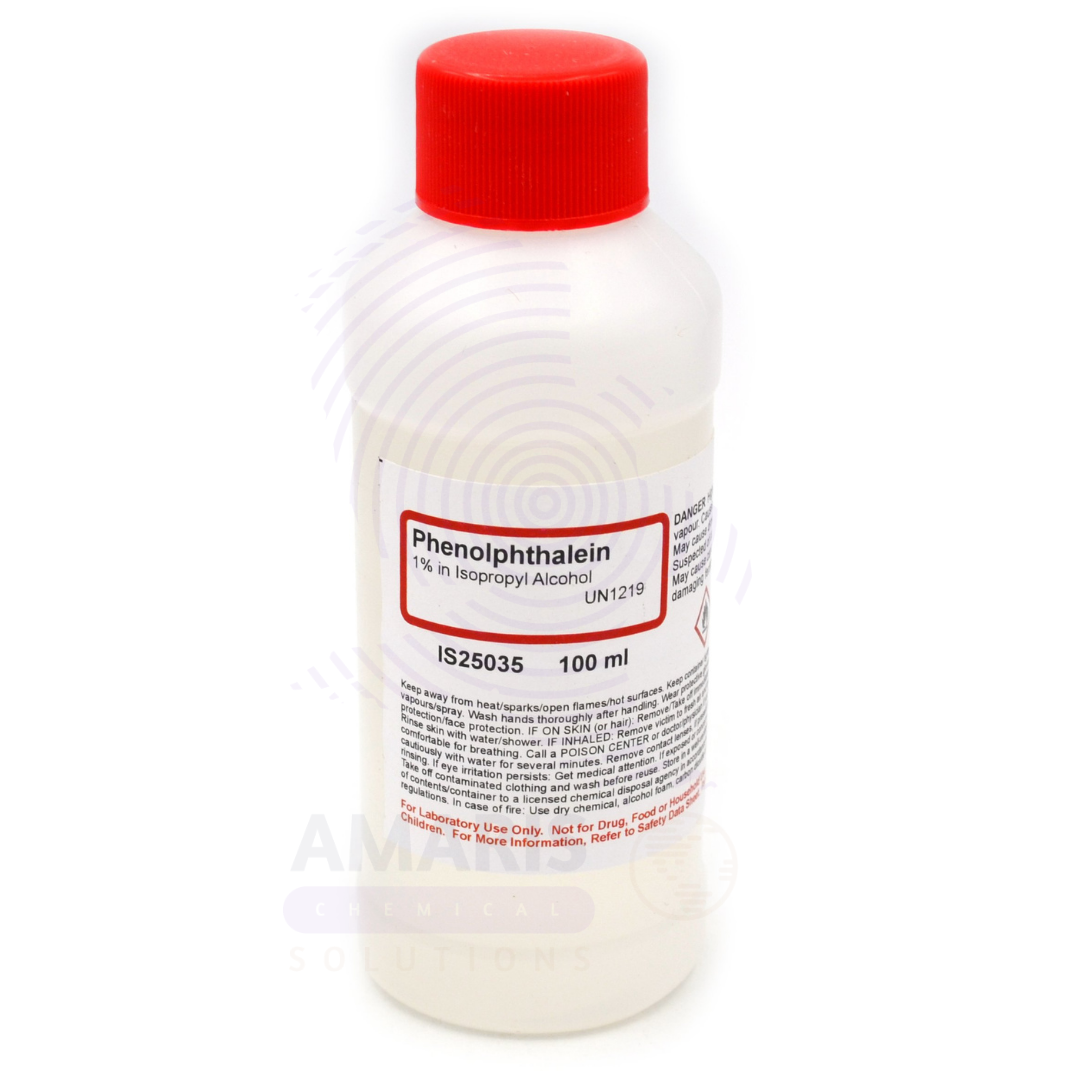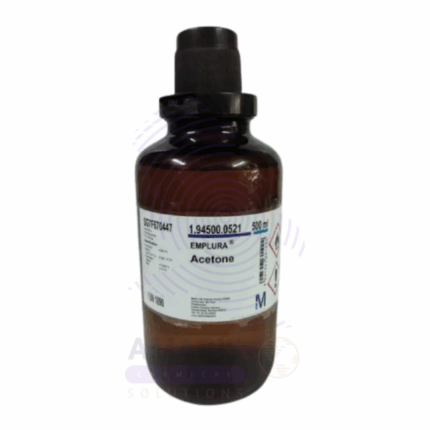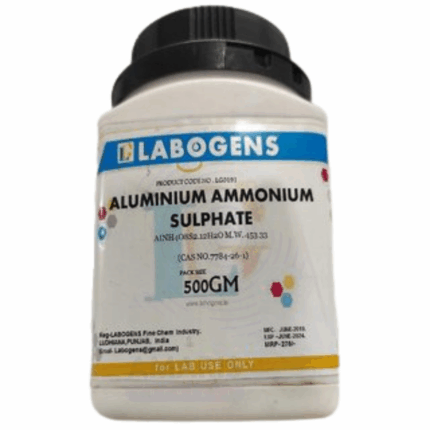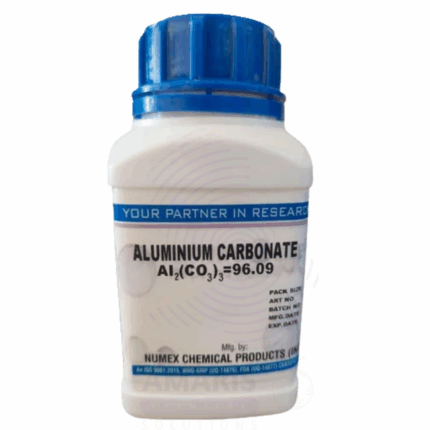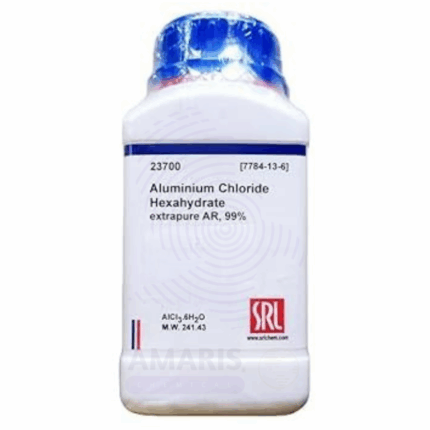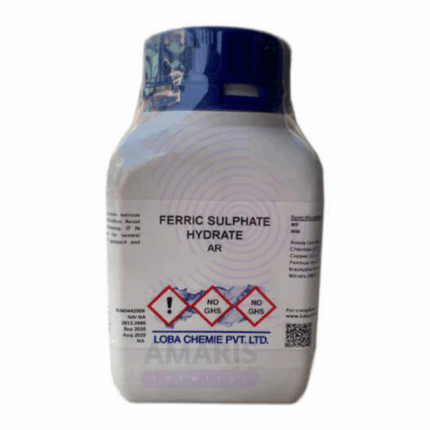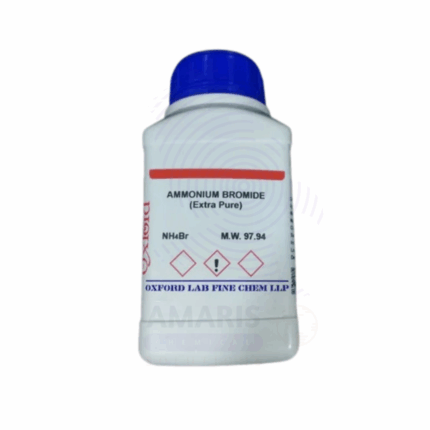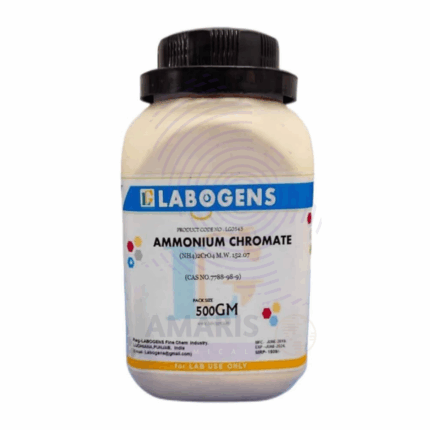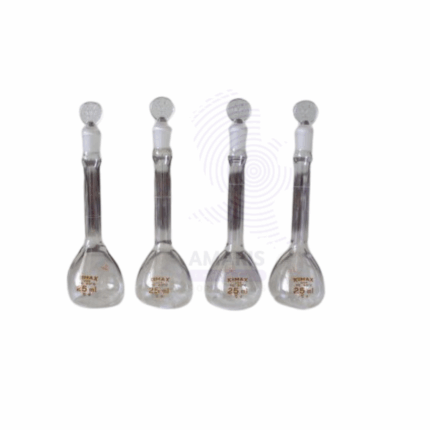

Phenolphthalein Solution Extra Pure
$ 9.05 Original price was: $ 9.05.$ 8.92Current price is: $ 8.92.
Phenolphthalein Solution Extra Pure is a laboratory-grade pH indicator solution, commonly used in titration procedures to determine the endpoint of acid-base reactions. It is prepared by dissolving phenolphthalein powder in an appropriate solvent, typically ethanol or water-alcohol mixtures, resulting in a clear, colorless solution that turns vivid pink in basic conditions—usually in the pH range of 8.2 to 10.0.
This high-purity solution offers excellent sensitivity and reliability for analytical chemistry, quality control, and educational demonstrations. It is especially favored in alkalinity testing, neutralization reactions, and various standard laboratory protocols. Proper handling is essential, including the use of gloves and eye protection, as the solution may cause skin or eye irritation upon contact. Store tightly sealed, away from direct light and incompatible substances like strong acids or oxidizers, to maintain its stability and effectiveness.
Phenolphthalein Solution Extra Pure
PRIMARY USES
- Used as a pH indicator solution in acid-base titrations (colorless in acidic solutions and pink in alkaline solutions above pH 8.2).
- Essential in laboratory chemistry for neutralization reactions and end-point determination.
- Included in standard test procedures in educational, industrial, and research laboratories.
- Applied in water treatment testing to evaluate the pH and alkalinity of samples.
- Commonly used in teaching labs to demonstrate pH behavior visually.
SECONDARY USES
- Utilized in forensic tests (e.g., Kastle-Meyer test) for detecting the presence of blood.
- Acts as a chemical tracer in various fluid and leak detection applications.
- Occasionally used in art and science demonstrations for pH-sensitive color changes.
- Sometimes used in environmental monitoring to assess acidity or alkalinity in soil and water.
- Serves as a reference solution in calibration of pH indicators.
1. Basic Identification Attributes
- Chemical Name: Phenolphthalein Solution
- CAS Number: 77-09-8 (Phenolphthalein), 64-17-5 (Ethanol, if present)
- HS Code: 3822.00.00 (Prepared diagnostic or laboratory reagents)
- Molecular Formula: Typically C₂₀H₁₄O₄ in ethanol or aqueous-ethanol base
- Synonyms:
- Indicator Solution B
- Phph Indicator Solution
- Phenolphthalein Indicator in Ethanol
2. Physical & Chemical Properties
- Physical State: Liquid
- Color & Odor: Colorless solution (turns pink in alkaline pH); slight alcohol odor if in ethanol
- Boiling Point: Depends on solvent (ethanol: ~78 °C)
- Melting Point: Not applicable (liquid)
- Density: ~0.79–0.98 g/cm³ (varies with solvent)
- Solubility:
- Fully miscible in water/alcohol mixtures
- Soluble in ethanol
- pH Level (Indicator Range):
- Colorless below pH 8.2
- Pink to deep fuchsia above pH 10.0
- Vapor Pressure: Depends on ethanol content (~44 mmHg for pure ethanol at 20 °C)
- Flash Point: ~12–14 °C (if ethanol-based)
- Autoignition Temperature: ~363 °C (ethanol)
- Viscosity: Low
3. Safety & Hazard Attributes
- Hazard Class (GHS Classification):
- Flammable (if ethanol present)
- Health hazard (may cause irritation or suspected carcinogenicity from phenolphthalein)
- NFPA Ratings:
- Health: 2
- Flammability: 3
- Reactivity: 0
- Exposure Limits:
- OSHA PEL (ethanol): 1000 ppm
- ACGIH TLV (ethanol): 1000 ppm
- Reactivity:
- Stable under normal conditions
- Avoid heat, flame, and strong oxidizers
4. Storage & Handling Attributes
- Storage Conditions:
- Store in a cool, well-ventilated place away from ignition sources
- Keep tightly sealed
- Incompatible Materials:
- Strong acids, oxidizers, open flames
- Container Type: Amber glass or chemical-resistant plastic bottle
- Shelf Life & Expiration Date: Typically 2–3 years if unopened and stored properly
- Special Handling Requirements:
- Use gloves and eye protection
- Use under a fume hood if handling large volumes
5. Regulatory & Compliance Attributes
- Regulatory Status:
- Listed in TSCA, REACH
- Ethanol may be regulated for flammability
- Transportation Restrictions:
- UN Number: UN1170 (Ethanol Solution)
- Hazard Class: 3 (Flammable liquids)
- Waste Disposal Method:
- Dispose as hazardous chemical waste through licensed handler
6. Environmental & Health Impact
- Ecotoxicity:
- Harmful to aquatic organisms in high concentrations
- Persistence in Environment:
- Moderate persistence depending on solvent
- Carcinogenicity/Mutagenicity:
- Phenolphthalein: IARC Group 2B (possibly carcinogenic to humans)
- Ethanol: Not classified as carcinogenic at typical lab concentrations
- Biodegradability:
- Ethanol: Readily biodegradable
- Phenolphthalein: Slowly biodegradable
SAFETY PRECAUTIONS
Personal Protective Equipment (PPE):
- Wear a lab coat, nitrile gloves, and chemical-resistant goggles.
- Work in a fume hood to avoid exposure to vapors and splashes.
Handling:
- Avoid contact with skin, eyes, and clothing.
- Do not breathe vapors or mist.
- Wash hands thoroughly after handling.
- Use only in well-ventilated areas.
Storage:
- Store in a cool, dry, and well-ventilated area.
- Keep the container tightly closed when not in use.
- Keep away from heat sources, sparks, and open flames.
- Store away from strong oxidizing agents and acids.
FIRST AID MEASURES
Inhalation:
- Move the person to fresh air immediately.
- Seek medical attention if breathing becomes difficult or symptoms persist.
Skin Contact:
- Wash affected areas with soap and water.
- Remove contaminated clothing.
- Get medical attention if irritation or redness develops.
Eye Contact:
- Rinse thoroughly with water for several minutes.
- Remove contact lenses if present and easy to do.
- Continue rinsing and seek medical attention if irritation persists.
Ingestion:
- Rinse your mouth thoroughly with water.
- Do not induce vomiting.
- Seek immediate medical advice or contact poison control.
FIRE FIGHTING MEASURES
Flammability:
- May be flammable depending on the solvent (commonly ethanol or methanol based).
Extinguishing Media:
- Use dry chemical powder, alcohol-resistant foam, or carbon dioxide.
- Water spray can cool surfaces but may spread flammable liquid.
Hazardous Combustion Products:
- Can release carbon monoxide, carbon dioxide, and irritating vapors.
Firefighter Protection:
- Use self-contained breathing apparatus (SCBA) and full protective gear.
- Avoid inhaling fumes from combustion.


 Preservatives(food)
Preservatives(food) Flavor Enhancers
Flavor Enhancers Acidulants
Acidulants Sweeteners
Sweeteners Antioxidants
Antioxidants Colorants(food)
Colorants(food) Nutraceutical Ingredients (food)
Nutraceutical Ingredients (food) Nutrient Supplements
Nutrient Supplements Emulsifiers
Emulsifiers
 Collectors
Collectors Dust Suppressants
Dust Suppressants Explosives and Blasting Agents
Explosives and Blasting Agents Flocculants and Coagulants
Flocculants and Coagulants Frothers
Frothers Leaching Agents
Leaching Agents pH Modifiers
pH Modifiers Precious Metal Extraction Agents
Precious Metal Extraction Agents
 Antioxidants(plastic)
Antioxidants(plastic) Colorants (Pigments, Dyes)
Colorants (Pigments, Dyes) Fillers and Reinforcements
Fillers and Reinforcements Flame Retardants
Flame Retardants Monomers
Monomers Plasticizers
Plasticizers Polymerization Initiators
Polymerization Initiators Stabilizers (UV, Heat)
Stabilizers (UV, Heat)
 Antifoaming Agents
Antifoaming Agents Chelating Agents
Chelating Agents Coagulants and Flocculants
Coagulants and Flocculants Corrosion Inhibitors
Corrosion Inhibitors Disinfectants and Biocides
Disinfectants and Biocides Oxidizing Agents
Oxidizing Agents pH Adjusters
pH Adjusters Scale Inhibitors( water)
Scale Inhibitors( water)
 Antioxidants(cosmetic)
Antioxidants(cosmetic) Emollients
Emollients Fragrances and Essential Oils
Fragrances and Essential Oils Humectants
Humectants Preservatives
Preservatives Surfactants(cosmetic)
Surfactants(cosmetic) Thickeners
Thickeners UV Filters
UV Filters
 Fertilizers
Fertilizers Soil Conditioners
Soil Conditioners Plant Growth Regulators
Plant Growth Regulators Animal Feed Additives
Animal Feed Additives Biostimulants
Biostimulants Pesticides (Herbicides, Insecticides, Fungicides)
Pesticides (Herbicides, Insecticides, Fungicides)
 Active Pharmaceutical Ingredients (APIs)
Active Pharmaceutical Ingredients (APIs) Excipients
Excipients Solvents(pharmaceutical)
Solvents(pharmaceutical) Antibiotics
Antibiotics Antiseptics and Disinfectants
Antiseptics and Disinfectants Vaccine Adjuvants
Vaccine Adjuvants Nutraceutical Ingredients (pharmaceutical)
Nutraceutical Ingredients (pharmaceutical) Analgesics & Antipyretics
Analgesics & Antipyretics
 Analytical Reagents
Analytical Reagents Solvents(lab)
Solvents(lab) Chromatography Chemicals
Chromatography Chemicals Spectroscopy Reagents
Spectroscopy Reagents microbiology-and-cell-culture-reagents
microbiology-and-cell-culture-reagents Molecular Biology Reagents
Molecular Biology Reagents Biochemical Reagents
Biochemical Reagents Inorganic and Organic Standards
Inorganic and Organic Standards Laboratory Safety Chemicals
Laboratory Safety Chemicals Specialty Laboratory Chemicals(Special Laboratory Equipment)
Specialty Laboratory Chemicals(Special Laboratory Equipment)
 Demulsifiers
Demulsifiers Hydraulic Fracturing Fluids
Hydraulic Fracturing Fluids Scale Inhibitors(oil)
Scale Inhibitors(oil) Surfactants(oil)
Surfactants(oil) Drilling Fluids
Drilling Fluids
 Dyes and Pigments
Dyes and Pigments Bleaching Agents
Bleaching Agents Softening Agents
Softening Agents Finishing Agents
Finishing Agents Antistatic Agents
Antistatic Agents
 Admixtures
Admixtures Waterproofing Agents
Waterproofing Agents Sealants and Adhesives
Sealants and Adhesives Curing Compounds
Curing Compounds Concrete Repair Chemicals
Concrete Repair Chemicals Anti-Corrosion Coatings
Anti-Corrosion Coatings
 Surfactants(cleaning)
Surfactants(cleaning) Builders
Builders Enzymes
Enzymes Solvents (Cleaning)
Solvents (Cleaning) Fragrances
Fragrances
 Electronic Chemicals
Electronic Chemicals Catalysts
Catalysts Lubricants
Lubricants Photographic Chemicals
Photographic Chemicals Refrigerants
Refrigerants Automotive chemicals
Automotive chemicals Pyrotechnic Chemicals
Pyrotechnic Chemicals
 Biodegradable Surfactants
Biodegradable Surfactants Bio-based Solvents
Bio-based Solvents Renewable Polymers
Renewable Polymers Carbon Capture Chemicals
Carbon Capture Chemicals Wastewater Treatment Chemicals
Wastewater Treatment Chemicals
 Pigments
Pigments Solvents(paint)
Solvents(paint) Specialty Coatings
Specialty Coatings Binders/Resins
Binders/Resins Additives
Additives Driers
Driers Anti-Corrosion Agents
Anti-Corrosion Agents Functional Coatings
Functional Coatings Application-Specific Coatings
Application-Specific Coatings
 Fresh Herbs
Fresh Herbs Ground Spices
Ground Spices Whole Spices
Whole Spices Spice Blends
Spice Blends Dried Herbs
Dried Herbs
 Leavening Agents
Leavening Agents Dough Conditioners
Dough Conditioners Flour Treatments
Flour Treatments Fat Replacers
Fat Replacers Decoratives
Decoratives Preservatives(baking)
Preservatives(baking)
 Plasticizers & Softeners
Plasticizers & Softeners Reinforcing Agents
Reinforcing Agents Adhesion Promoters
Adhesion Promoters Vulcanizing Agents
Vulcanizing Agents Antidegradants
Antidegradants Blowing Agents
Blowing Agents Fillers & Extenders
Fillers & Extenders Accelerators & Retarders
Accelerators & Retarders